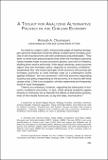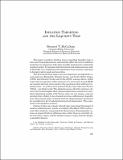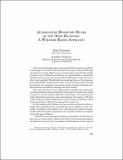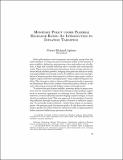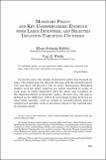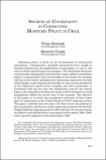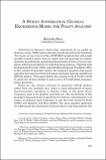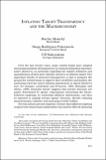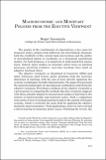Buscar
Mostrando ítems 101-110 de 132
A toolkit for analyzing alternative policies in the chilean economy
As noted by Leeper (1995) “the business pages of leading newspapers give the impression that the effects of alternative monetary policies on the macroeconomy are well understood and predictable.” They tend “to write with great certainty that when the monetary authority raises interest rates it slows ...
Inflation targeting and the liquidity trap
This paper considers whether issues regarding liquidity trap or zero lower bound phenomena substantially affect the case for inflation targeting, in comparison with other possible strategies for conducting monetary policy. It examines both theoretical and empirical issues and, in the latter case, ...
Alternative monetary rules in the open-economy: a welfare-based approach
How do central banks choose among alternative monetary polocies? In this paper we analyze that question for an open economy following an interest rate rule. Many issues remain controversial in the design of such a rule. If inflation is targeted, as it presumably is, should the domestic interest rate ...
Monetary policy under flexible exchange rates: an introduction to inflation targeting
Both policymakers and economists increasingly accept that the main medium- to long-run goal of monetary policy is the pursuit of price stability, defined as maintaining a low and stable rate of inflation. A high and variable inflation rate is socially and economically costly.
Monetary policy and key unobservables: evidence from large industrial and selected inflation-targeting countries
In recent years, the design of monetary policy has focused on gaps—the output gap, the interest rate gap, and the unemployment rate gap have all played a role in policy discussions. Standard models used for policy analysis are either specified in terms of such gaps or imply important roles for these ...
Sources of uncertainty in conducting monetary policy in Chile
Monetary policy is made in an environment of substantial uncertainty. Consequently, academic researchers have sought to formally demonstrate the implications of uncertainty, as well as the ways in which central banks can manage it. The theoretical literature on uncertainty distinguishes between three ...
A sticky-information general equilibrium model for policy analysis
Following on Keynes’s desire that economists be as useful as dentists, Lucas (1980) argues that this would amount to the following: “Our task, as I see it, is to write a FORTRAN program that will accept specific economic policy rules as ‘input’ and will generate as ‘output’ statistics describing the ...
Inflation target transparency and the macroeconomy
Over the last twenty years, many central banks have adopted increasing standards of transparency in communicating their monetary policy objectives, in particular regarding the explicit definition and quantification of their price stability objective or inflation target. One important benefit of increased ...
Macroeconomic and monetary policies from the eductive viewpoint
The quality of the coordination of expectations, a key issue for monetary policy, obtains from different, but interrelated, channels: both the credibility of the central bank intervention and the ability of decentralized agents to coordinate on a dynamical equilibrium matter. For both purposes, it is ...
Determinacy, learnability, and plausibility in monetary policy analysis: additional results
It is almost superfluous to begin by emphasizing that recent research in monetary policy analysis has featured a great deal of work concerning conditions for determinacy—that is, existence of a unique dynamically stable rational expectations equilibrium— under various specifications of policy behavior.1 ...

